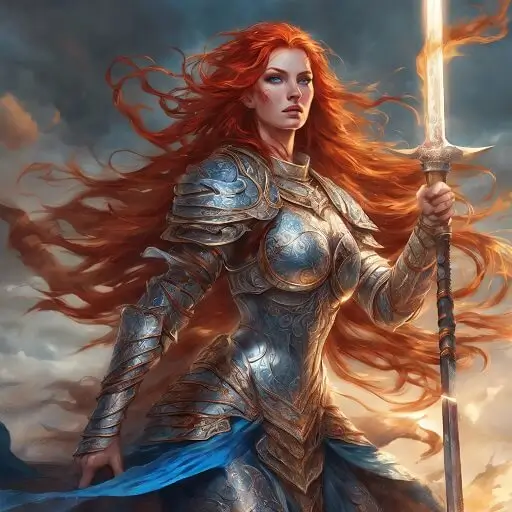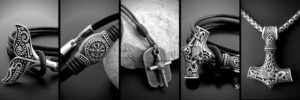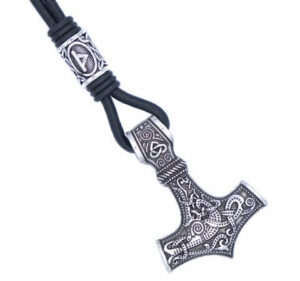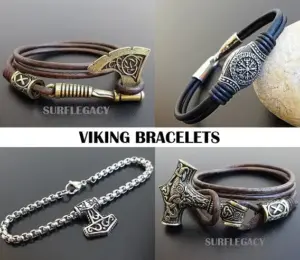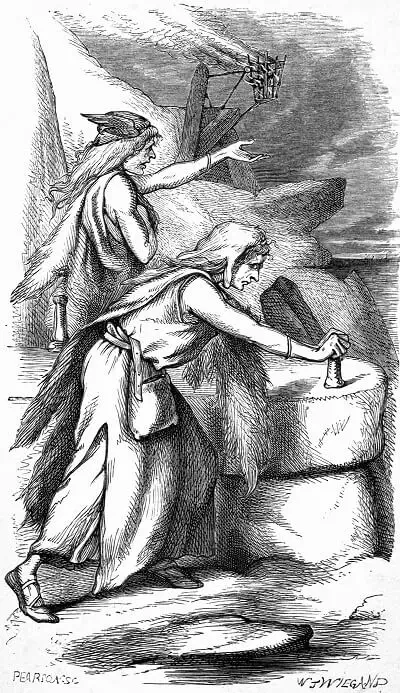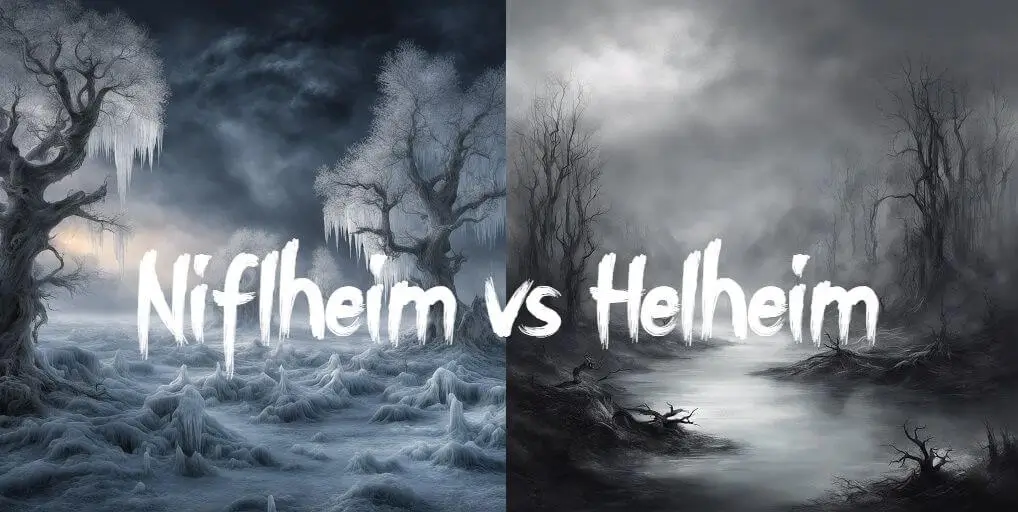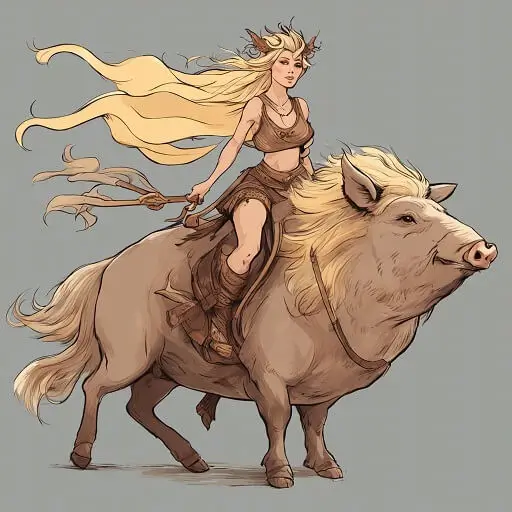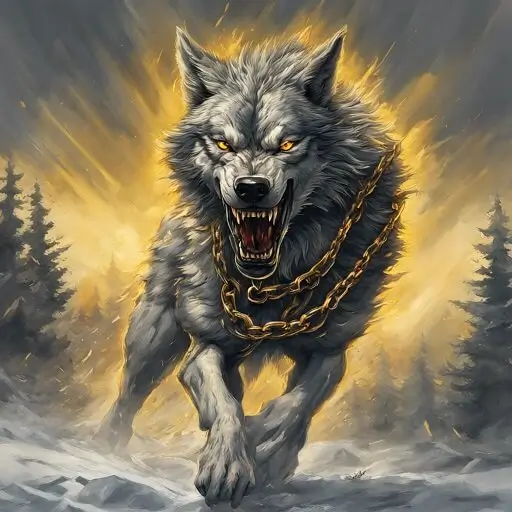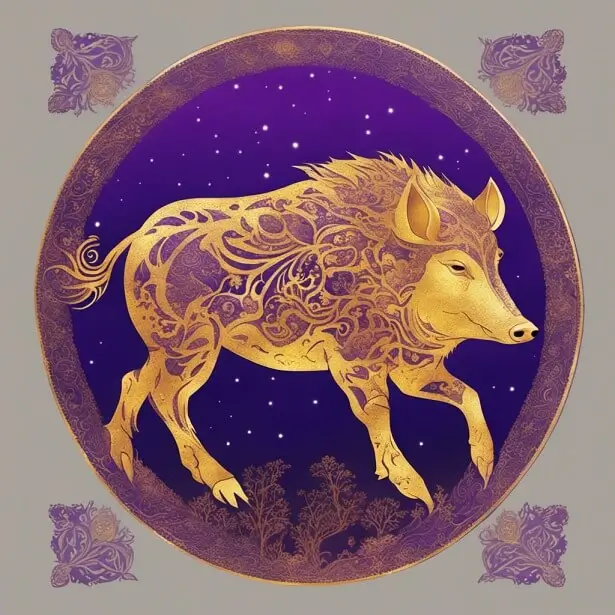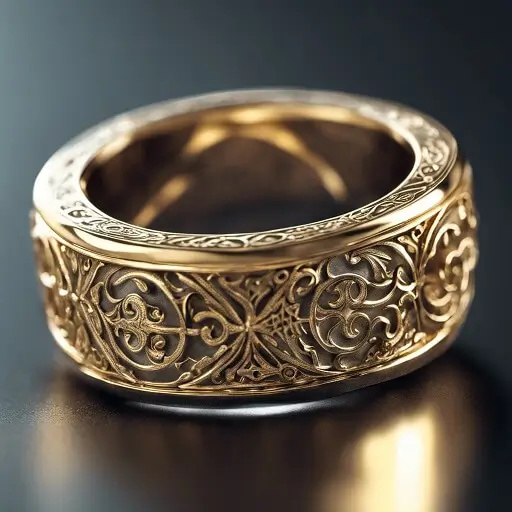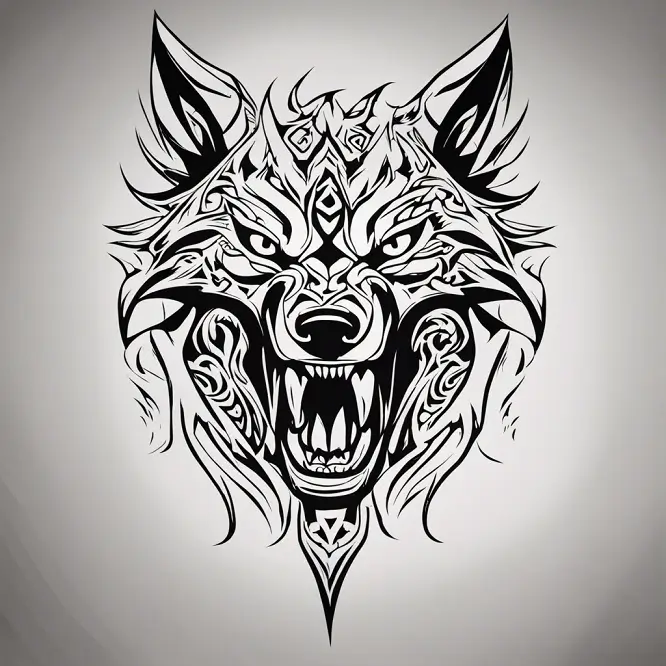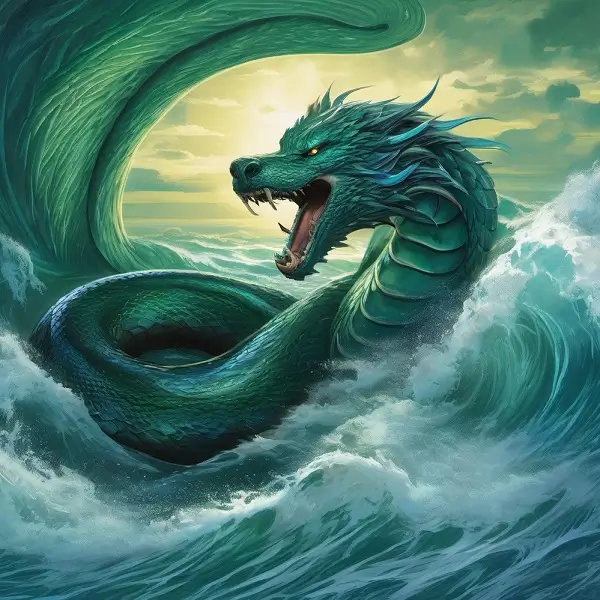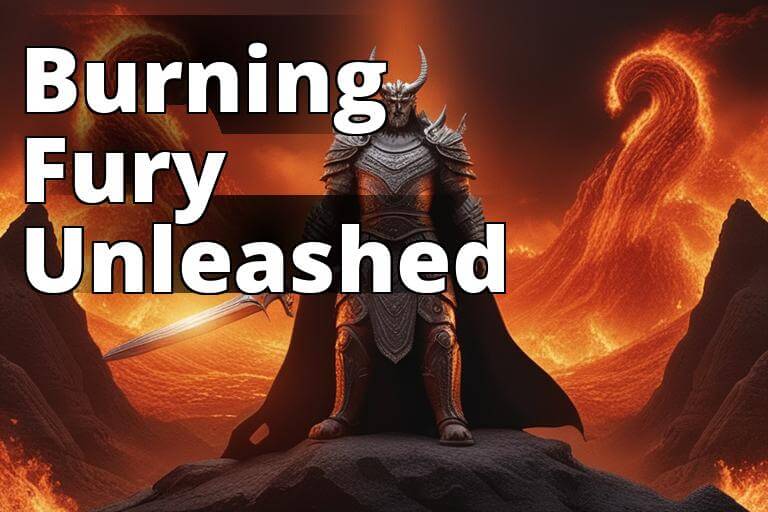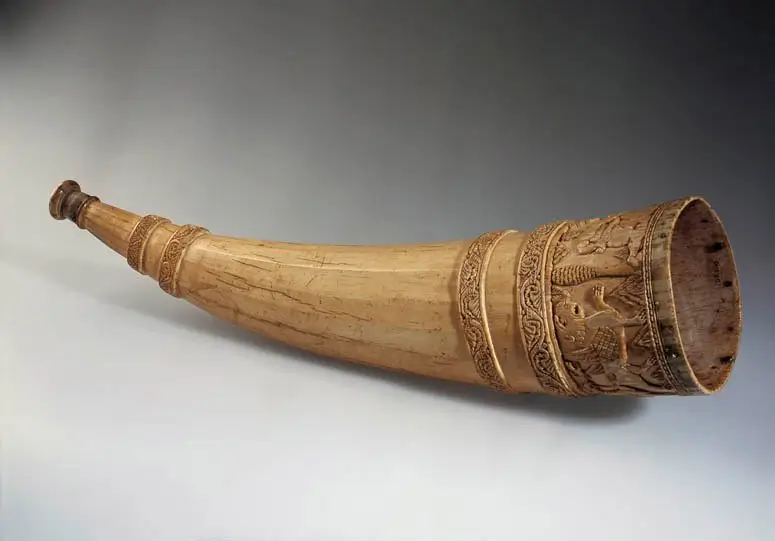Thrud (Old Norse Þrúðr) is a goddess associated with strength, power, and battle in Norse mythology, as the daughter of Thor, the mighty god of thunder, and Sif, the golden-haired goddess of earth, Thrud embodies the formidable traits of both her parents.
Name and Kennings
The name Thrud translates to “strength” or “power” in Old Norse. This meaning fits Thrud’s divine lineage and the traits she represents, as the daughter of Thor, the defender of Asgard and god of thunder, strength is woven into Thrud’s very identity.
In the Prose Edda’s Skáldskaparmál, Thor is referred to by the kenning “father of Þrúðr” (faðir Þrúðar), emphasizing the bond between father and daughter.
The skald Eysteinn Valdason also uses this kenning in his poem eulogizing Thor. These connections showcase Thrud’s importance among the Æsir and her shared fame with Thor.
Other kennings provide further insight into Thrud.
In Bragi Boddason’s Ragnarsdrápa, the jötunn Hrungnir is named “thief of Þrúðr” (Þrúðar þjófr). Additionally, in Eilífr Goðrúnarson’s Þórsdrápa, Thor is called “he who longs fiercely for Þrúðr” (þrámóðnir Þrúðar). Both kennings highlight Thrud’s emotional resonance in Norse poetry and myth.
Overall, these kennings emphasize Thrud’s ties to Thor and hint at an unnamed myth involving the giant Hrungnir. They showcase her standing in the Norse literary tradition.
Family
As the daughter of Thor and Sif, Thrud comes from an esteemed divine bloodline. Her father Thor is one of the most prominent Norse gods, known for his bellowing temper, trusty hammer Mjölnir, and role defending Asgard from the forces of chaos.
Sif, Thrud’s mother, is a golden-haired goddess associated with the earth’s bounty.
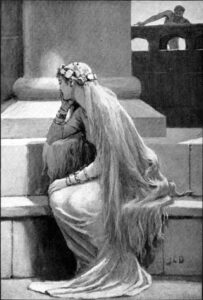
Sif
Thrud’s siblings include her half-brother Magni and biological brother Modi, born to Thor, and potentially Ullr, god of archery. The goddess likely resided in Thrudheim along with her parents.
Thrud’s other divine relations are extensive.
As Thor’s daughter, she can claim ties to the Æsir royalty, her grandfather is Odin the Allfather and her uncle the mighty Vé.
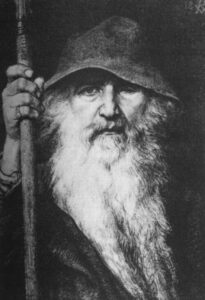
Odin
Her aunts include legendary goddesses like Frigg, Freya, and Idunn. This web of kinship situates Thrud within the fabric of Norse myths and showcases her august ancestry.
Goddess of Battle or Valkyrie?
While Thrud’s familial ties are stated outright in the sources, her main role or function as a goddess remains ambiguous.
There are a few possibilities that arise based on references to the goddess.
She may be chiefly connected to battle, warfare and valor or could potentially be one of the famed valkyries who gather worthy fallen warriors to Odin’s hall.
The 10th century Karlevi Runestone discovered on the Swedish island of Öland contains a reference supporting the former association.

Karlevi Runestone – credit image Wikimedia Commons
In the memorial inscription, a chieftain is described as the “battle-tree of Þrúðr”, making Thrud a goddess of war whom warriors would follow into combat. This positions the goddess as a leader of warriors, commanding forces on ancient battlefields.
However, Snorri Sturluson lists Thrud as one of the valkyries in his Prose Edda.
As a chooser of the glorious dead, Thrud selects brave fallen fighters to join Odin’s host of einherjar. If this Thrud is the same figure as Thor’s daughter, it suggests she transitions from goddess of battle to valkyrie in her mythic role.
She could represent a particularly fierce or mighty valkyrie compared to her kindred.
Ultimately, Thrud seems to be connected to battle, strength, and valor whether as a war goddess or battle maiden. The sources emphasize these traits in tandem with her impressive lineage. She likely inspires and leads warriors in life and death.
The Dwarf Alvíss and Thrud
An entertaining myth recorded in the Poetic Edda poem Alvíssmál, involves the dwarf Alvíss and his thwarted attempt to marry Thrud.
The poem begins with Alvíss, whose name means “all-wise”, arriving at Thor’s hall. He has come to claim Thrud’s hand in marriage, stating that she was promised to him by one of the gods.
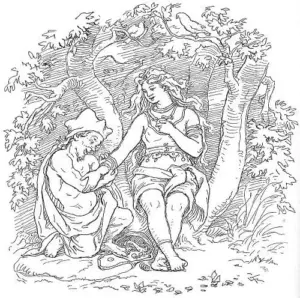
Alvíss and Thrud, by Lorenz Frølich 1820-1908
Thor does not deny such an arrangement was made, but asserts his paternal authority by emphasizing only he can give his beloved daughter away to a suitor.
Behind Alvíss’ bold claim likely lies a previous deal with the gods to craft Thor impressive goods in exchange for Thrud’s hand.
In one translation, Thor refers to himself as “Lord of Chariots,” hinting Alvíss forged him an astonishing divine chariot.
Another version instead implies the dwarf’s payment was weaponry, as the master smiths of Svartalfheim equipped the gods with their iconic arms and armor.
Yet despite acknowledging the legitimacy of Alvíss’ claim, Thor schemes to prevent the unsuitable match. Protective of his daughter and distrustful of dwarves, he engages Alvíss in a battle of wits, asking and answering questions until the first light of dawn.
As sunlight touches the dwarf, he turns to stone, nullifying the claim yet sparing Thor from denying payment for goods rendered.
The poem elucidates several key points – the authority fathers held over arranging their daughters’ marriages, the craftsmanship of dwarves, and Thor’s affection for his children. Ultimately through cleverness and paternal instinct Thor spares Thrud an unfavorable fate, cementing his renown both for brawn and sharp wit.
Goddess of Strength
As her name indicates in Old Norse, Thrud embodies the concept of strength. She likely represents the physical might and warrior’s prowess seen in her father Thor. The combination of her lineage and sparse mythic references paint an image of a formidable goddess of battle.
Even after the fall of Asgard, Thrud survives Ragnarök along with her valiant brothers Magni and Modi. Inheriting Mjölnir, she gains the power of storms and lightning as the new Goddess of Thunder. Thrud continues the legacy of her esteemed bloodline, defending the remaining gods and Midgard from future threats.
The runic inscription naming a great chieftain the “battle-tree of Thrud” demonstrates how Norse warriors sought the blessing of the goddess before venturing into combat. As a deity of war imbued with divine strength, brave fighters would have carried Thrud’s vigor and valor with them on the battlefield.
In a broader sense, the very name Thrud may have inspired courage or symbolic strength in those uttering it. Myth often impacts culture and mindset, with gods like Tyr and Thor representing warrior ideals ancient Norsemen would strive to embody.
Though details surrounding Thrud are scarce, her lineage and meaning would have resonated with Viking Age warriors. They very likely carried remnants of Thrud’s strength and valor with them when raiding, trading, and settling abroad.
Appearance and Iconography
As with many Norse deities outside the most prominent figures, no detailed descriptions of Thrud’s appearance or visual iconography survive.
Some conjectures around her possible look can be made based on her warlike, thunderous pedigree, however, given that Thrud is both a battle goddess and Thor’s daughter, she may often be depicted armed and in warrior raiment.
This could potentially include mail armor, spears, axes, or a shield. She may adopt Thor’s iconic winged helmet as a visual link.
Alternatively, as an embodiment of strength and stormy might, artists could represent Thrud grasping bolts of lightning or flashing streams of power. This would visually connect her to Thor and reinforce her inherited position as a goddess of storms after Ragnarök.
Modern media featuring Thrud often combines these conjectural motifs.
In the God of War games, Thrud possesses long red hair, facial scars suggesting a history of combat, and is shown wielding both axe and hammer. These design choices nod to her warlike nature, bond with Mjölnir, and thunder god lineage.
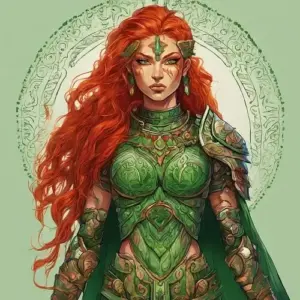
Ultimately, any visual representation would emphasize Thrud’s associations with storms, Thor, battle, and immense strength. Her appearance would reflect her mighty pedigree and role as heir to Asgard’s warrior traditions.
The Goddess in the Wider Norse Tradition
While references to Thrud in Norse myth and poetry are scarce, what exists clearly imprints her importance surrounding Thor and warrior culture. Mentions span a variety of sources, reinforcing her place in the tradition’s consciousness.
The Poetic Edda contains the fullest accounts of Thrud.
In addition to the Alvissmal poem, Snorri’s Prose Edda cites her as Thor’s daughter and potentially a valkyrie. She also appears in skaldic poetry, where she lends emotional weight to kennings, like those found in Bragi Boddason’s works.
Even on material objects, her name holds power, as shown on Sweden’s Karlevi Runestone.
An anonymous Old Norse poem cataloging goddesses also includes Thrud, emphasizing her status among divine females:
“Now all the Ásynjur shall be named: Frigg and Freyja, Fulla and Snotra…”
“Hlín and Nanna, Hnoss, Rindr and Sjǫfn, Sól and Sága, Sigyn and Vǫr; then there is Vár, and Syn must be named, and Þrúðr and Rán [are] listed next to them.”
While small, these combined references securely situate Thrud as Thor’s daughter and a goddess of battle, strength, and storms within the Norse mythic corpus. They underline her importance even among minor or obscure deities and showcase her long-standing veneration.
Modern Culture
As interest in Norse mythology expands in modern media, once-overlooked figures like Thrud increasingly gain attention.
She plays a supporting role in Marvel’s Thor comics as the sister of Magni and Modi. These stories emphasize Thrud as embodying Thor’s power, with lightning abilities and a winged helmet.
More prominently, Thrud features in the recent God of War Ragnarök game as an adolescent daughter of Thor, she befriends the protagonist Atreus, talks of becoming a valkyrie one day, and later assists Kratos against her crazed father.
After finding Mjölnir, she succeeds Thor as the goddess of thunder. This portrayal blends Thrud’s sparse mythic aspects with imaginative additions, bringing wider visibility to her legacy.
The name Thrud also endures in various forms as a given name for girls across Germanic-language countries. Variants like the Old Norse Þrúður, German Trude and English Trudy derive from Thrud’s storied mythic namesake. The goddess of strength continues to influence culture and language centuries onward.
Key information about Thrud:
| Category | Details |
|---|---|
| Parents | Thor & Sif |
| Partners | None known |
| Siblings | Magni, Modi, possibly Ullr |
| Offspring | None known |
| Tribe | Aesir |
| Old Norse name | Þrúðr |
| Goddess of | Strength, power, battle |
| Other roles | Potential valkyrie |
| Symbols | Lightning, weapons, armor |
| Residence | Likely Thrudheim with Thor & Sif |
| Mythic tales | Alvíssmál (thwarting marriage to dwarf Alvíss) |
| Fate | Survives Ragnarök, inherits Mjölnir |
| Legacy | Becomes goddess of thunder after Ragnarök |
Key Takeaways
- Thrud is the daughter of Thor and Sif in Norse mythology, associated with strength, power, and battle. Her name translates to “strength” or “power.”
- She likely represents a goddess of battle and valor who leads warriors in combat. Alternatively, she may be one of the valkyries who gather fallen warriors for Odin’s hall.
- An amusing myth involves the dwarf Alvíss trying to marry Thrud after being promised her hand. Thor cleverly prevents the marriage through a battle of wits until dawn turns Alvíss into stone.
- Thrud survives Ragnarök and inherits Mjölnir, becoming the new Goddess of Thunder and continuing the lineage of storm deities.
- While details on Thrud are scarce, her importance surrounding Thor and warrior culture shines through in references across Norse myth and poetry.
FAQs on Thrud
Will Thrud become a Valkyrie?
It is hinted Thrud may join or already has joined the ranks of Odin’s Valkyries. As a battle maiden gathering honorable dead warriors, this would complement her warlike lineage and interest in combat.
Will Thrud survive Ragnarok?
Did Thor have a daughter in mythology?
Yes, in Norse myths Thor had a daughter named Thrud with his wife Sif.
Is Thrud a demigod?
No, as the daughter of two powerful gods – Thor and Sif – Thrud is considered a full goddess, not a demigod or other lesser supernatural being.
How strong is Thrud?
As Thor’s daughter, Thrud likely possesses tremendous strength, though may not quite equal her father’s or brother Magni’s legendary might. Still, she endures Ragnarök and proves worthy of inheriting Thor’s weapon and role, attesting to her formidable power.
Why does Thrud’s lineage and background matter?
As the daughter of Thor, Thrud is closely associated with strength, storms, and Norse warrior culture. Her lineage and what little myths survive showcase the importance of deities related to combat in the Viking ethos. Thrud’s legacy ties to important aspects of Old Norse religion – battle, valor, and thunderous might.
Conclusion
While substantive information about Thrud is lacking outside a few references, they offer illuminating insight into this daughter of Thor. Mentions across Eddaic poems, the Prose Edda, skaldic poetry, and historic inscriptions showcase Thrud’s resonance.
She embodies battle, storms, and power – a fitting embodiment of Thor and Sif’s lineage. Despite scarce surviving myths, what endures showcases Thrud’s importance for ancient Norse culture, religion, and identity.
Shop Viking Jewelry
Are passionate about Vikings or Norse Mythology?
Finding the ideal piece of Viking Jewelry can be challenging and time-consuming, especially if you lack inspiration or don’t know where to look.
Surflegacy, has you covered. We have a wide range of Handmade Jewelry in various styles, shapes, colors, and materials, to accentuate your Viking spirit and look. Do not hesitate to visit our selection HERE

